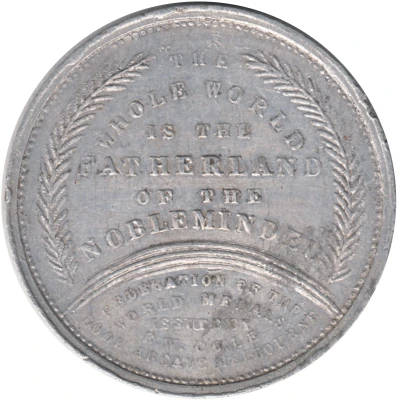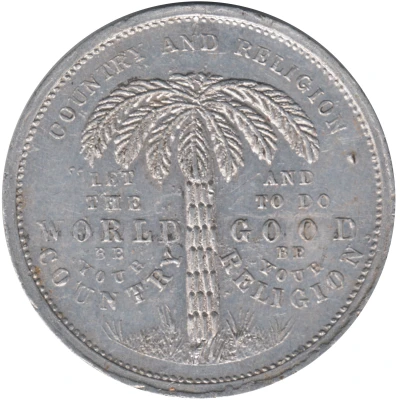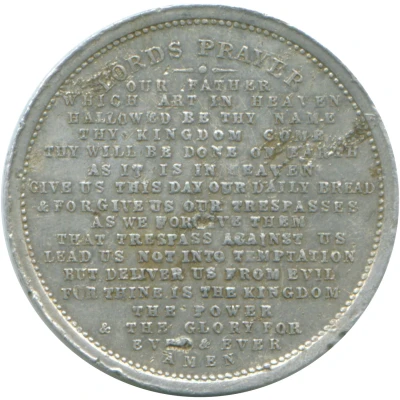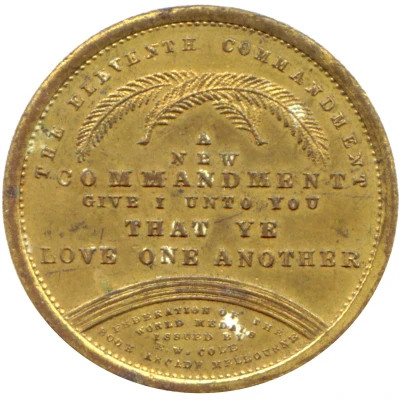
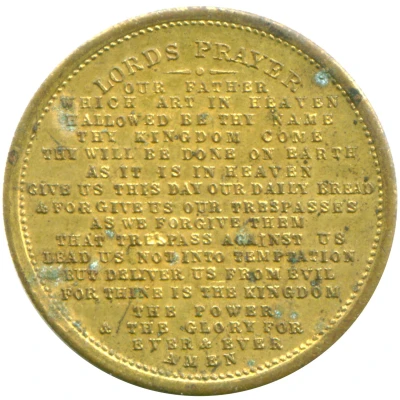

Token - The Eleventh Commandment Lords Prayer ND
1885 year| Gold plated brass (Gilt - washed) | 10.3 g | 31 mm |
| Location | Victoria (Australian States) |
|---|---|
| Queen | Victoria (1837-1901) |
| Type | Trade tokens › Business tokens |
| Year | 1885 |
| Composition | Gold plated brass (Gilt - washed) |
| Weight | 10.3 g |
| Diameter | 31 mm |
| Thickness | 2 mm |
| Shape | Round |
| Technique | Milled |
| Orientation | Medal alignment ↑↑ |
| Demonetized | Yes |
| Updated | 2024-11-14 |
| Numista | N#408172 |
|---|---|
| Rarity index | 97% |
Reverse
Script: Latin
Lettering:
LORDS PRAYER
OUR FATHER
WHICH ART IN HEAVEN
HALLOWED BE THY NAME
AS IT IS IN HEAVEN
GIVE US THIS DAY OUR DAILY BREAD
& FORGIVE US OUR TRESPASSES
AS WE FORGIVE THEM
THAT TRESPASS AGAINST US
LEAD US NOT INTO TEMPTATION
BUT DELIVER US FROM EVIL
FOR THINE IS THE KINGDOM
THE POWER
& THE GLORY FOR
EVER & EVER
AMEN
Edge
Plain
Comment
This Medal, from Cole's Book Arcade, is one of a series of medals offering maxims and proverbs issued by E.W. Cole at his Book Arcade. He called the medals 'little missionaries for the spread of educative knowledge' (Dean, 1988, p.36).
According to Sydney Endacott, an employee of Cole, customers were charged three pence for these medals (which he prefers to call tokens) which, when the Arcade was particularly busy, gave them admission to the second-hand books gallery where the orchestra played. Each medal could be exchanged for thee pence worth of goods, but most were kept. The pierced ones were sometimes worn as pendants or on pocket watch chains. The medals served as perpetual advertisements of the Arcade (Victorian Historical Magazine, February 1962). George Dean suggests that the medals were also given in change at Christmas time, and could be used to operate amusement machines (presumably including the symphonion and hens, although these only required one penny to operate).
Cole had his first medal struck in 1879 and his last one about 1903. The medals were variously gilded, silvered or bronzed, replicating the coinage then circulating, or plated with nickel or white metal. The medal blanks were usually made of copper or brass, but some might have been bronze; aluminium was also sometimes used. In all, perhaps 300,000 medals were struck, in 97 types. Only 50 types are known to have circulated (George Dean, 1988, A Handbook on E.W. Cole: His Book Arcade, Tokens and Medals).
